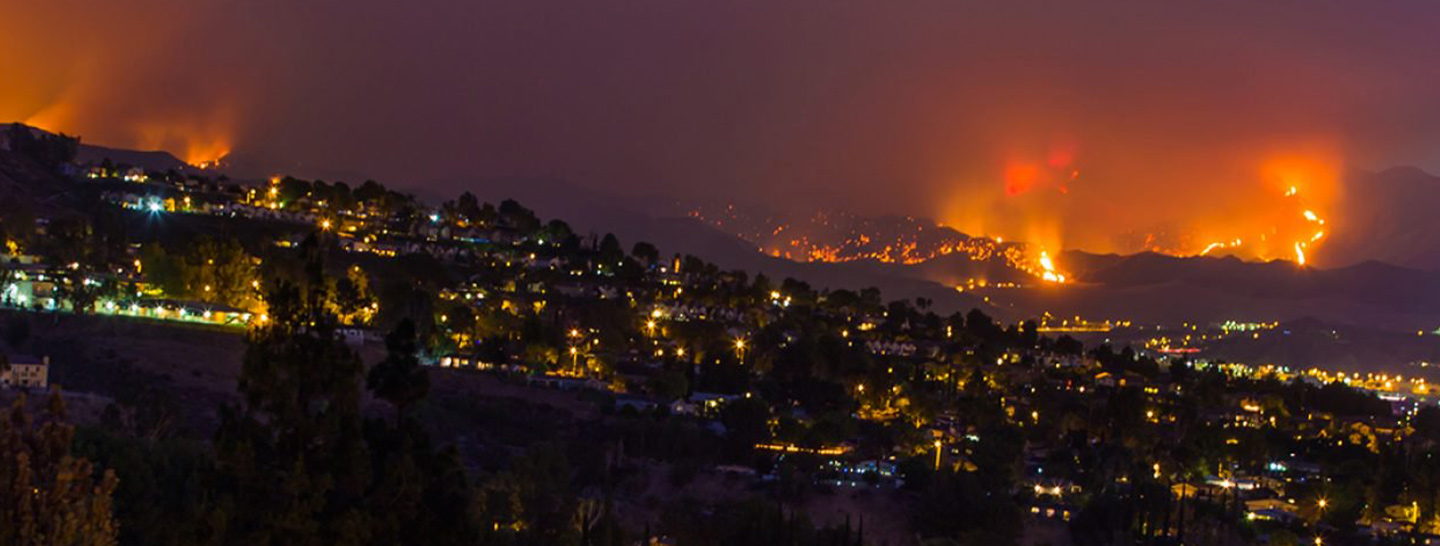California is in the midst of historic wildfires, while the record heat that arrived in August has barely slowed down, and both of these have factored into recent blackouts. For residents of the state and all those fighting the fires, it’s a dangerous and difficult situation, and one that we hope will soon begin to come under control.
But extreme weather may be with us for years to come. These weather events are a clear illustration of why energy flexibility and programs like demand response are so important to grid operators and utilities in trying to keep grids stable, and why resiliency can be so crucial for energy users in the face of possible disruption.
Fires Growing Every Year
This year’s fires have now burned a record 2 million total acres in California—and the season is far from over, with some parts of California typically seeing wildfires continue through October. There have been a wide variety of contributing factors this year, including extreme heat and a dry winter, as well as some notorious human contributions like pyrotechnics.
Blackouts Have Touched Millions Across the State
During this extreme weather, California has experienced blackouts on several different occasions. The reasons for the blackouts are complex, but extreme heat, high demand for cooling, and wildfires are among the factors. Wildfire prevention has led to customers losing power, too, as PG&E in recent years has planned cut power for customers as part of their Public Safety Power Shutoffs.
The Grid—And End Users—Need Flexibility Like Demand Response
Blackouts are not exclusively about extreme weather. California needs to have sufficient supply resources available to account for all hours of the day, for instance when solar production begins to decrease at sundown. One key to making sure there is always sufficient supply is to incentivize energy flexibility among energy users.
Utilities and grid operators reward and pay for flexibility among energy users to help with the energy transition. For instance, programs like demand response have made important contributions, as end users receive payments for curtailing energy usage when the grid is under stress.
Enel X DR Customers Shine on Labor Day—And All Summer
Demand response participants have been extremely active and helpful this summer in adding flexible resources to the grid. Across the Saturday and Sunday of Labor Day Weekend alone, Enel X saw almost 7 hours of demand response dispatches in the Base Interruptible Program (BIP), one California demand response program.
This has put the program at roughly 27 hours of total dispatches for the year, and our customers have performed well during these events, going above and beyond in their contributions. Participants in demand response provide valuable help to their regions in efforts to stabilize the grid. Customers have been asked to curtail many times throughout the summer, yet we’ve consistently seen great participation.
Storage assets, like lithium-ion batteries, can be an important contributor to grid flexibility, too. Batteries that have stored energy can, in some cases, re-supply that stored electricity back to the grid in times of need, or users can simply use the stored energy to meet onsite needs without relying as much on the grid.
Resiliency Can Help Businesses and Communities
The growth of both demand response and storage will be crucial to California in the future. But end users still need to be prepared for potential disruptions in the coming years. Resiliency solutions are the best way for businesses to ensure they have continuous access to energy. There are numerous ways to ensure your business is resilient, from microgrids to batteries to solar + storage. These can provide energy for periods ranging from a few hours to a few days – or even indefinitely, in some cases.
Resiliency can help at the community level, too. Community choice aggregation (CCA) is an alternative energy model that is growing in popularity—as defined by the EPA, they are “programs that allow local governments to procure power on behalf of their residents, businesses, and municipal accounts from an alternative supplier while still receiving transmission and distribution service from their existing utility provider.” Eight states have passed legislation to allow CCAs, but they are especially prominent in California.
As resiliency is becoming a greater priority in California CCAs, many seek to create microgrids to ensure they retain power in the face of grid disruption. In many cases, their regional focus helps make resiliency particularly effective. As one CCA CEO told Utility Dive, “our elected officials tend to be very well-informed about what the local needs are and what the local resources are, so we can really combine efforts where feasible.”
Is This The Future?
Energy flexibility is crucial as we move forward, because the situation in California does not seem likely to drastically change in the near term.
Daniel Swain, a climate scientist with the Institute of the Environment and Sustainability at UCLA told the New York Times that this year’s early start to wildfire season—and the appearance of wildfires in unprecedented places—has left him shocked. He said that he’s “running out of superlatives” to describe the situation there.
It’s clear that California needs to prepare for events like these in the future by leveraging programs like demand response. And businesses and communities alike should explore resiliency solutions that can help them as extreme weather continues.








